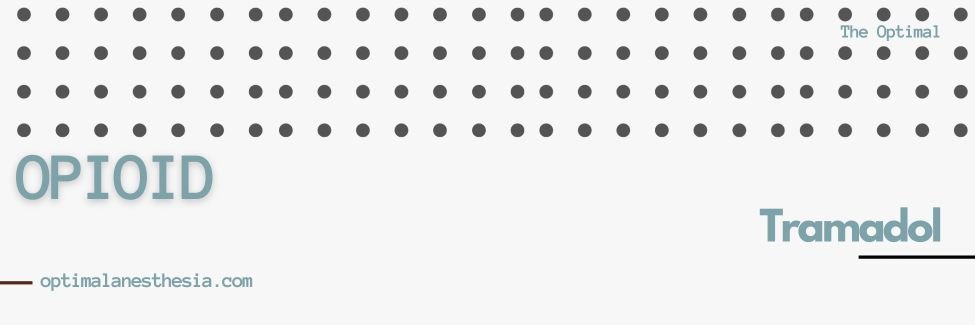Tramadol is a versatile analgesic that finds applications in the field of anesthesia due to its unique mechanism of action and relatively mild side effects. This article provides an overview of tramadol’s use in anesthesia, including its dosing, onset, and duration of action, along with considerations for its intranasal administration.
Tramadol: Mechanism of Action
Tramadol is a centrally acting analgesic that primarily interacts with mu (µ) opioid receptors but also exhibits weak affinity for kappa (κ) and delta (δ) opioid receptors. Its analgesic potency is approximately 5 to 10 times lower than that of morphine. Tramadol’s multifaceted mechanism includes:
- Mu Opioid Agonism: Tramadol acts as a partial agonist at mu receptors, contributing to its analgesic effects.
- Neurotransmitter Reuptake Inhibition: It inhibits the reuptake of norepinephrine and serotonin (5-hydroxytryptamine) in the spinal cord. This action enhances descending inhibitory pathways.
- Stimulation of Serotonin Release: Tramadol also stimulates the presynaptic release of serotonin.
Tramadol is available as a racemic mixture of two enantiomers, each contributing to its unique pharmacological properties.
Clinical Applications
1. Intraoperative and Postoperative Pain Management
Tramadol is effective for moderate to severe pain control during and after surgery. It minimally depresses respiratory function, making it a suitable choice for patients where respiratory depression is a concern. It has been noted to reduce postoperative shivering.
2. Chronic Pain Management
Tramadol’s lower potential for addiction and its relatively mild sedative effects make it a preferred choice for chronic pain management. It is not associated with significant organ toxicity at standard doses.
Dosing and Administration
In the context of anesthesia, tramadol is administered at varying doses and routes to manage pain effectively. The following table summarizes tramadol’s dosing recommendations:
Table 1: Tramadol Dosing and Administration
| Route | Dose | Onset of Action | Duration of Action |
|---|---|---|---|
| Oral | 3 mg/kg | 30-60 minutes | 4-6 hours |
| Intramuscular | 3 mg/kg | 15-30 minutes | 4-6 hours |
| Intravenous | 3 mg/kg | 5-10 minutes | 4-6 hours |
| Intranasal | 1-2 mg/kg (divided) | 10-15 minutes | 2-4 hours |
Note: Intranasal administration typically involves dividing the dose equally between both nostrils.
Considerations and Precautions
- Tramadol should be used cautiously in patients on Coumadin anticoagulants, as interactions may occur (though not consistently reported).
- It may lower the seizure threshold; thus, it should be avoided in patients with epilepsy or those taking medications that reduce the seizure threshold (e.g., certain antidepressants).
- Nausea and vomiting are common side effects when used as an analgesic in the perioperative setting.
- Intranasal administration offers a rapid onset of action but may require dose adjustment based on patient response.
Conclusion
Tramadol’s unique pharmacological profile, with a combination of mu opioid agonism and neurotransmitter reuptake inhibition, makes it a valuable analgesic in the field of anesthesia. Its versatility in dosing and administration routes allows for tailored pain management in various clinical scenarios, from surgery to chronic pain conditions. Careful patient selection and monitoring are essential to maximize the benefits of tramadol while minimizing potential side effects.


